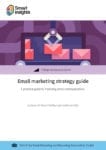Converting your subscribers to open and read the email
There are 3 key steps to increasing email marketing conversions and it’s necessary to get each of them right as they can all impact (either positively or negatively) the success of your email marketing campaign. All too often when we talk about email marketing we simply consider the email, however, email marketing is much more than that. There is a 3 step process to achieving conversions within email marketing and all 3 steps are as impactful as each other – so be sure not to neglect any of them! This article is part 1 in a series of 3 covering each step 1 - you can read part 2 and part 3 here.

Step 1: Email Opens
Yes, this first step is an obvious but crucial one. If we fail at this point, the likelihood of Steps #2 and #3 being successful are dramatically reduced. We need to ensure that we give it the best chance possible to be actioned and here are some helpful tips:
Stay focused on the objective of the email
This will help you to ensure you’re attracting the right audience with your subject line. I also encourage you to write it down – which will help you to stay focused. All too often we get lured into thinking the objective of the email is to gain as many opens as possible but in most cases, this is not so….more likely than not it will be event registration, downloads, product purchase etc. So by keeping focused on the objective of the email (i.e. conversions) we’ll be more likely to craft subject lines that attract the audience that is most likely to convert, rather than simply attracting a larger audience who convert at a lower rate.
Download Expert Member resource – Email marketing Guide
This guide shows you how to take your email marketing to the next level in 7 actionable steps.
Access the Email marketing strategy guide
Here’s an example of a subject line test performed by Veet. We can see that the subject line that achieved the highest open rates actually had the lowest conversions (entries to the competition). However, the subject line with the highest conversions, achieved this with the lowest open rates. Therefore, if we were to have gone with the open rate as being the successful metric – which is the most popular metric to measure subject line success - we would have lost out on conversions, which is the objective of this campaign.
So by focusing on the objective and understanding which metric matters the most to the success of the email, you’re more likely to achieve greater success.
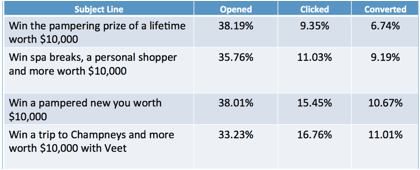
Think CURVE when crafting your subject line
Use at least two elements from the CURVE method – Curiosity, Urgency, Relevance, Value, Emotion.
The below example from ASOS uses Curiosity in the form of personification, Urgency and Emotion.
"Open me quick! I expire at 6pm, payday treat."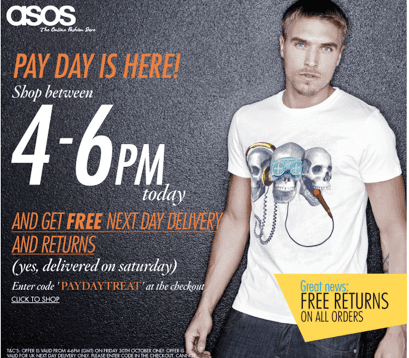
Create subject line immediately after writing your objective
The simple act of creating (or should I say ‘crafting’) your subject line first, will help you to stay focused on the objective of the email, and as such assist you to achieve better results. Over the years I’ve trained hundreds of email marketers and 90% of them admit that they save writing the subject line until a few minutes before we push ‘send’, which results in a hurried and potentially ineffective subject line.
By writing the subject before you do anything else you are not only allowing yourself the time to craft a persuasive and effective subject line, but you are also using the subject line to prepare the framework of a persuasive email designed to get the reader to take the next action.
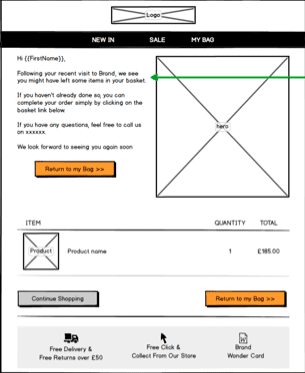
Encourage action by frontloading verbs in your subject line
Using action words motivates us humans to perform an action. Because they’re often a direction or invoke action, our eyes are drawn to these exciting words, so be sure to frontload verbs in your subject line. Experiment with different verbs to discover what verbs resonate well with your audience. They perform a dual-service in that they can also direct the reader to perform an action "take," "download," "reserve," "ask," "buy," etc.
Keep in mind too, that many verbs perform a dual service and contain the benefit as well – these are powerful verbs. Some examples are; prevent, simplify, maximise, succeed, increase – don’t be shy about testing what works best for you.
I love iMedia Connection’s use of front-loading verbs in the below subject lines. “Meet”, “Win” and “Become”

Here’s a subject line test that involved frontloading verbs.
- Version A: Your Opinion Counts – Win a Fiji Hand Tote
- Version B: Take the 5 Minute Fiji Survey – Win $50.
Interestingly although Version B got fewer opens it gained higher click through’s and so was designated as the winner.
I believe though that this wasn’t the only reason why this subject line won over the other version. Factors such as specificity and pre-qualification also play their part in it being the winning version. It’s a great example of how the CURVE Method works in conjunction with verbs. In this case Value + Relevance + Frontloading verbs was the winning combination.
Craft your subject line for longitudinal wins as well as immediate wins
Subject lines have an extremely important job to do – not only for the immediate conversions but they also have an impact on longitudinal results.
The UK DMA’s Email Tracking Report 2014 shows that when a consumer receives an interesting email, they do more than just click. 45% save the email for later and 38% bear the information in mind for later. Your subject line plays an important role in whether they do either of these actions.
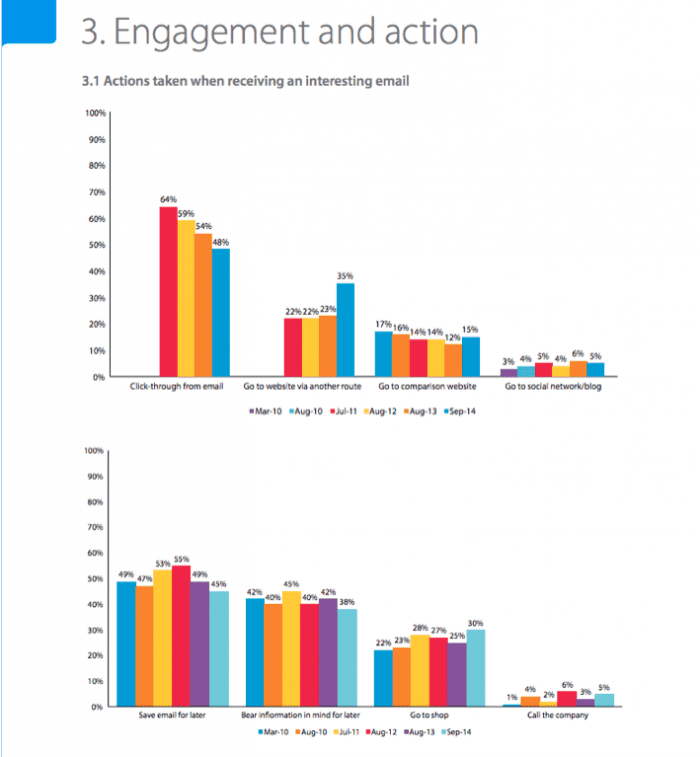
The key to achieving this is to use the CURVE Method and be very specific with your subject lines – you want to end up with a subject line that very clearly reveals the benefit and hooks them into reading the subject now – even though they may not action for weeks or months.
Leverage the strengths of email as a Push Channel
Email being a Push Channel means that we can benefit from being able to send messages at appropriate times in the consumer’s lifecycle – we don’t have to wait for them to come to us. One of the beneficial outcomes of this is that more often than not, email is one of the main drivers of traffic to your website.
Another benefit is the branding exposure we receive from sending emails. This is called the Nudge Effect. As we saw with the DMA report, success with an email doesn’t always end with a click. Email pushes the consumer to other channels directly and it often begins and ends with the subject line. If you’ve carefully crafted the subject line it may drive them directly to the website or even if they’ve deleted the email, more often than not, they’ve read the subject line before doing so and this will have an impact when in a couple of weeks, they remember your subject line and go to your website.
One of the main ingredients of a successful subject line is to package up the subject line so that it is customer-centric and not brand-centric and is therefore easily digested by the reader enabling them to easily determine the value the email conveys.
For example:
Brand-Centric: Our sale is on! We have hundreds of items discounted! Don’t miss out!
Customer-Centric: Here’s your chance to save $$$! For 24 hours only. Don’t miss out on bagging yourself a bargain.
As you can see the first version is very brand-centric and uses the words ‘our’ and ‘we’, whilst the second version uses ‘your’ and ‘yourself’.
With a tiny bit of thought you can turn this feature-led subject line into being a benefit-led subject line. Simply state the feature (Our sale is on!) and ask yourself “So What?” This leads you to answer it with the benefit (Here’s your chance to save $$$!).
Join me tomorrow to discover some tips on how best to convert your subscribers to click/action your emails. And feel free to check out my webinar all about how to create email subject lines that increase conversions.
If you are interested in optimising your welcome email campaign then download our new guide on welcome emails and onboarding below.
Download Expert Member resource – Email Welcome and Onboarding Guide
This guide uses examples and best practice tips to show the different ways that companies can enhance their email marketing program through the use of welcome and onboarding emails. .
Access the Email welcome and onboarding guide




